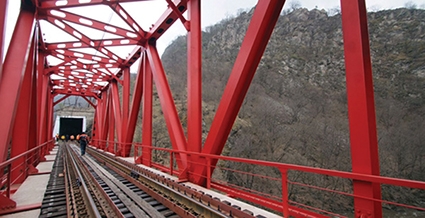The Armenia-Iran Railway
The Iranian side is still considering the possibility of building a connecting railway with Armenia - the representative of the Ministry of Transport and Urban Development of Iran, Mehdi Ashfari, told journalists on March 6 in the margins of the meeting of the TRACECA (Transport Corridor Europe Caucasus Asia) Intergovernmental Commission.
“The Iranian side views this project as very important,” he added, going on to note the need to create a transport corridor between the Persian Gulf and the Black Sea. “Negotiations on the implementation of the program are ongoing.”
Earlier, Iranian Foreign Minister Mohammad Javad Zarif said at a press conference in Tbilisi that “in the case of a corridor between the Persian Gulf and the Black Sea, great opportunities will open and the cost of transportation will significantly decrease.”
On February 12, in an interview with journalists, the Iranian Ambassador to Armenia, Seyd Kazem Sadjadi, also noted that the Armenian side should make the first step towards the construction of the Iran-Armenia railway. “The Armenian side should present the project to potential investors,” said the Iranian diplomat.
The project, first announced in 2012, is still not completely formed. Construction is estimated at $3.2 billion. The routes of connection with the operating railway would run through the Sevan coast (Sevan station) and the Ararat valley (Yeraskh station). “At the moment, the route through Sevan is preferable,” the Minister of Transport, Communications and IT Vahan Martirosyan explained, adding that according to rough estimates, the payback period of the project is estimated at 22 years.
The total length of the route through the territory of Armenia would be 305 km. It is to have 86 bridges, a total length of 19.6 km, and 60 tunnels with a total length of 102 km. Construction in accordance with the submitted program should be completed in 2022.
However, according to independent economic analysts, the economic inefficiencies in the construction of the Iran-Armenia railway are based on three major factors. This, first of all, is the deadlock of the Armenian railway and the impossibility of its direct access to the “Russian and Eurasian expanses.” Secondly, even with the hypothetical possible unblocking of the Abkhaz section of the railway in the future, the presence of the currently constructed Iran-Armenia section of the North-South highway will make the Iran-Armenia railway, in connection with its insignificant length, ineffective. To this initially low efficiency, the third, perhaps most important, factor is added: the railway project of the Astara-Resht-Qazvin railroad realized by the Railways; a transport corridor that connected the existing railways of Russia, Azerbaijan and Iran. The project was implemented within the framework of the international transport corridor ‘North-South,’ whose goal is the integration of the transport and information highways of Russia, Azerbaijan, Iran, India and Oman. According to analysts, the Iran-Armenia railway project is exclusively politically motivated and that is why, over the last five years, it has barely moved forward.
Yet on a positive note in this regard, Minister of Transport, Communications and Information Technologies of Armenia, Vahan Martirosyan, received the Director General of the Office for Eurasian Civil Engineering Corporation of China, Jiang Aimin, whose company is interested in the design and construction of the Armenia-Iran railway. Aimin noted that the project ‘One Belt, One Road’ will be discussed at the Ministry of Commerce of China. He stressed that after the positive process of discussions, the Chinese side will be ready to conduct a feasibility study of the Armenian project.
Dimitri Dolaberidze











